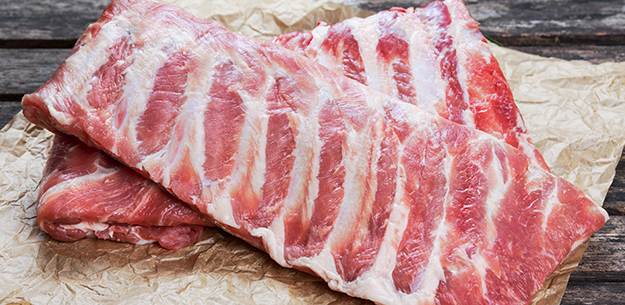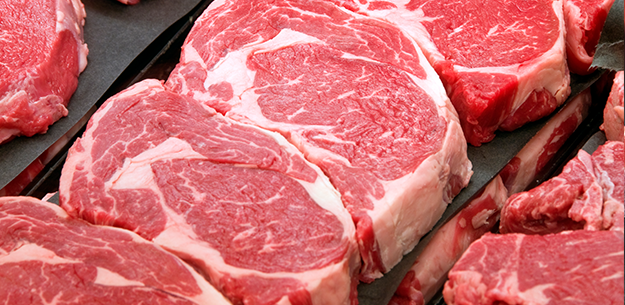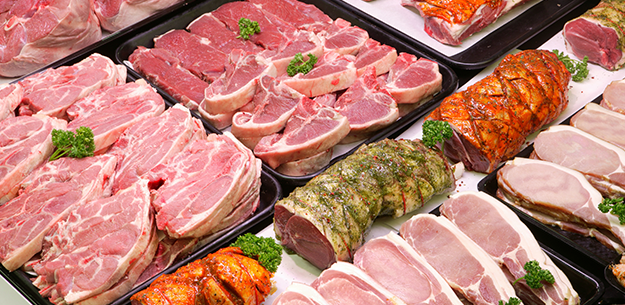.png.transform/rendition-xs/image_image%20(1).png)
Fresh meat
In Spain, all types of cattle and poultry are reared reflecting the country's great geographic and climatic diversity. In general, Spain is a dry country and, although there are green pasturelands in the north, much of the livestock that supplies the Spanish meat industry is reared intensively on cereals. There are, however, still a large number of native breeds that are reared in the traditional way in harmony with their natural environment.
Beef
Spain has about 6.4 million heads of cattle, of which almost half are cows. The Autonomous Communities of Spain with the largest numbers of beef cattle are Castile-Leon, Castile-La Mancha, Extremadura and Aragón. In general, Spain is a dry country and, although there are green pasturelands in the north, much of the livestock that supplies the Spanish meat industry is reared intensively on cereals.
Although all types of cattle are reared in Spain, there are still a large number of native breeds that are raised in the traditional way in harmony with their natural environment. The European systems for protecting quality, especially the Protected Geographical Indications (PGI), have helped preserve their identity, allowing consumers to enjoy genuine flavors with clear identification and official protection.
This is the case with various beef cattle breeds from the damp, mountainous regions in the north such as Rubia Gallega (PGI Rubia Gallega), Asturiana de los Valles (PGI Ternera Asturiana), Tudanca (PGI Carne de Cantabria), Pirenaica (PGI Carne de Vacuno del País Vasco and PGI Ternera de Navarra); in addition to Morucha (PGI Carne de Morucha de Salamanca), Retinta (PGI Ternera de Extremadura), and Avileña Negra Ibérica (PGI Carne de Ávila and PGI Carne de la Sierra de Guadarrama) from the drier parts of central and southern Spain where the climate is more extreme.
Lamb
Spain has over 24 million sheep, an animal that is ideally adapted to the country's relief and climate. Spain was an important player in the international wool trade starting in the Middle Ages, but when it declined in the 19th century, sheep increasingly started to be bred for meat and milk. Spain both produces and consumes lamb, one of the most representative products in its gastronomy, especially considering the importance of this meat in the diet of the different cultures that have lived on the Iberian Peninsula – Christian, Muslim and Jewish.
Among the sheep breeds that are well-adapted to the steep, dry lands that exist in many parts of Spain are the Merino sheep, famous for the outstanding quality of their wool and now especially appreciated for their tender, lean, pink meat. In Aragón, various breeds are farmed – Rasa Aragonesa, Ojinegra de Teruel and Roya Bilbilitana, which serve as the basis for production under the PGI Ternasco de Aragón guarantee. In this region, lamb is generally known by the local term ternasco, rather than the usual cordero. The breed usually found on the plains of Castile-La Mancha is the robust Manchego (PGI Cordero Manchego), which is reared for its meat, but above all for the production of the famed Manchego cheese. In Castile-León, Churro, Castellano and Ojalado sheep are the raison d’être for PGI Lechazo de Castilla y León – lechazo being a local term for suckling lamb. And Navarre is known for its suckling lamb from PGI Cordero de Navarra.
Pork
Spain is the European Union’s second largest producer and a large consumer of pork, with over 24 million pigs. Pork is of great importance in Spanish gastronomy and it is popular in all regions of Spain. Until relatively recently, it used to be common practice in rural areas to rear one or two pigs on a domestic level. The preparation and butchering of the animal was a long-awaited cause for celebration. Every part of the pig was used, either fresh or in the form of a wide range of pork products. White pork is the highest-yielding. Its production is highly industrialized and based on the most usual international breeds.
Ibérico pork
Ibérico pork, which is the raw material for the famous Ibérico hams and cured pork products, is also excellent as fresh meat. The key to its much-appreciated meat is a genetic characteristic whereby a biological mechanism allows fat to infiltrate the muscle, thus yielding marbled, juicy meat with a singular texture and aroma. Fresh Ibérico pork meat is becoming increasingly popular, figuring on the menus of leading chefs in both Spain and abroad, especially in Japan. The preferred cuts of Ibérico pork include the solomillo (tenderloin), presa (shoulder loin), pluma (top loin), sorpresa (surprise), secreto (fore loin) and, more recently, carilleras (cheeks).
Goat
Spain currently has just over three million goats. Goats are well-adapted to Spain, especially the Mediterranean and southern regions, and suckling goat represents the large majority of the meat consumed. Young goat’s meat is tender and flavorsome and it is much appreciated in the cuisine of Spanish regions like Andalusia and the Canary Islands.
Poultry
Many different types of poultry are farmed – including turkey, quails and even ostrich – but the main type is the classic chicken. They are mostly fed cereal, which results in bigger birds with excellent meat. Alongside the large population of hybrids, there are still some native varieties of great interest, such as the Prat breed from the Baix Llobregat district in Barcelona (Catalonia), which gives rise to the PGI Pollo y Capón del Prat. This breed can be distinguished by the bluish color of its legs, pearly skin, elongated breast and sweetish meat.
A large majority of Spanish poultry production (90%) is made up of “broilers”, young chickens that weigh approximately one and a half kilos (3 lbs 4 oz). Spain produces about 13% of the European total. Turkey meat is also increasing its market share.
Game
Today hunting is just a sport, but it is still practiced, under strict rules and regulations, in many parts of Spain.
The most representative small game bird in Spain is the red-legged partridge, which has excellent meat. Castile-La Mancha, in the center of the Iberian Peninsula, is the region with the largest flocks. This area is famous for its pickled partridge in escabeche.
In northern Spain and Andalusia, another popular game bird is the wood pigeon. August and September are the best months for hunting quails, fairly common all over Spain. They are smaller than the partridge but also have delicate meat. Rabbit and hare are widely hunted in many parts of Spain. Their flavorsome meat figures in many regional recipes.
The mountainous areas are home to wild boar, deer, roebuck and other large game. There are companies that specialize in the sale of large game meat, mostly to restaurants. Different preparations for game form part of the gastronomy of many Spanish regions.
The European systems for protecting quality, especially the Protected Geographical Indications (PGI), have helped preserve Spanish meat identity, allowing consumers to enjoy genuine flavors with clear identification and official protection.
Santiago Botas/@ICEX. Edited by Adrienne Smith/@ICEX



- /content/dam/en/icex-foodswines/images/products/fresh-meat/Fresh%20meat%20carr1.png
- /content/dam/en/icex-foodswines/images/products/fresh-meat/Fresh%20meat%20carr2.png
- /content/dam/en/icex-foodswines/images/products/fresh-meat/Fresh%20meat%20carr3.png

